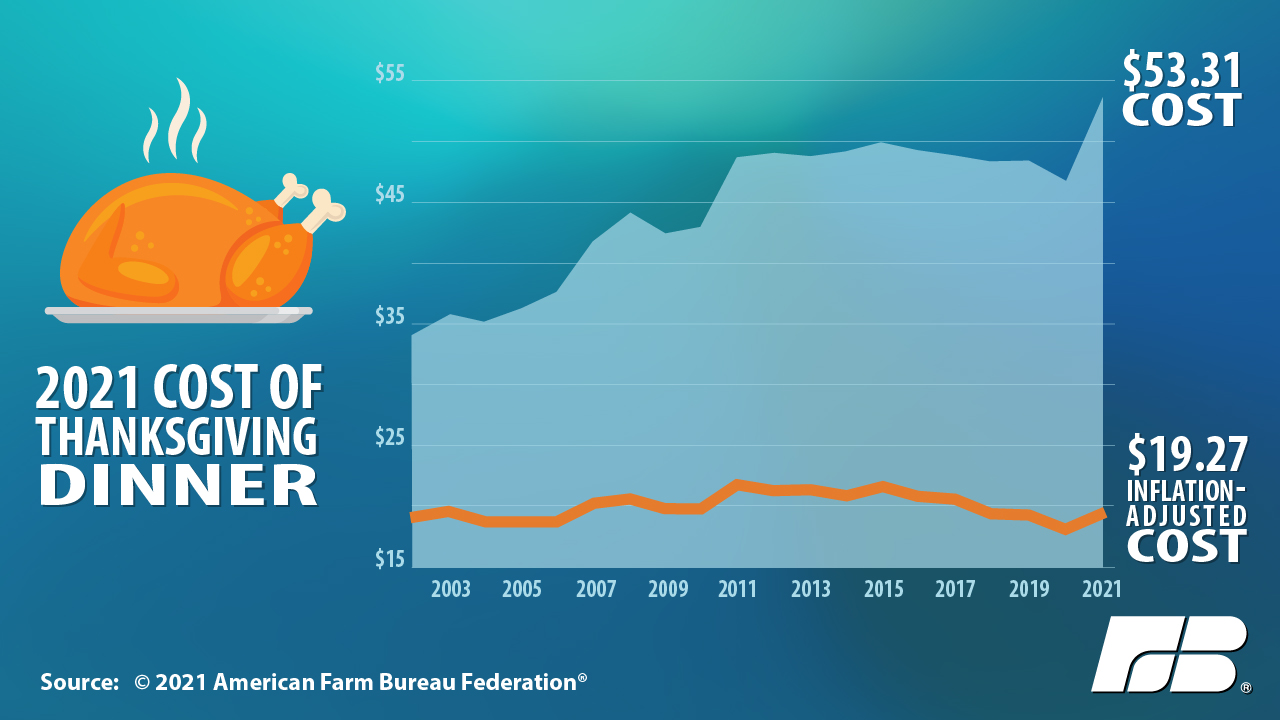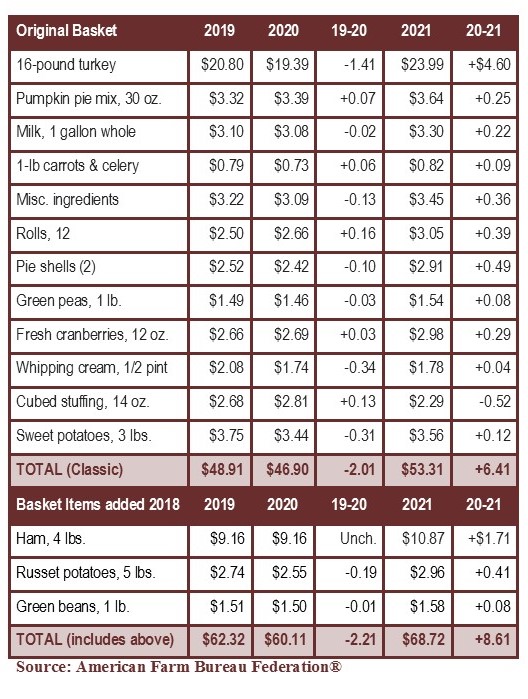Inflation is rearing its ugly head in time for the holidays. The estimates of how much more you will pay this year vary, but Thanksgiving Dinner will definitely cost more than it has in the past.
According to the American Farm Bureau Federation® survey (which we use every year), we can expect this year’s Thanksgiving dinner to cost 14% more than last year. Remember that this is an informal survey using volunteer shoppers (218 this year) from all 50 states and Puerto Rico. While results vary by state, the overall findings were confirmed by the Labor Department.
Rising at an annual rate of 6.2%, the October consumer price index (CPI) “all items” index reported its largest 12-month increase since November 1990. Fuel oil topped the chart with an annual increase of 59.1%, while the entire energy index rose 30%.
At 5.3%, the food index was much tamer, but all major grocery store food groups saw increases over the year, ranging from dairy products (which were up 1.8%) to Beef (which had an increase of 20.1%). Turkey and other poultry rose 11.9%. While the CPI and Farm Bureau survey cover different time frames, both agree that this Thanksgiving will be the costliest on record.
Turkey, the centerpiece of the meal, on the Farm Bureau survey was up 24%, more than double what the CPI indicated. Pie crusts had the second largest jump at 20%, followed by dinner rolls and vegetables. The only item that cost less this year was cubed stuffing mix. That was down 19% from last year.
Actually, taking the Turkey off the table (so to speak), the Farm Bureau’s basket showed a 6.6% increase, which closely resembles that of the CPI food index.
The prices per items from 2019-2021 are listed in the chart below. The price from 2018 to 2019 did not change much but the COVID effect caused prices to decrease last year. Supply chain disruptions brought them back up, and pushed them even higher this year.
In the 35 years since the Farm Bureau has been conducting this survey, the price of the original basket has gone down 23 times, usually preceded by a major economic event. The exception was the period from 2016-2018 when the price dropped three years in a row.
Of course, a shrewd shopper can get better prices on many of the items because the volunteer shoppers are instructed not to use coupons or take advantage of special promotions. Another caveat is that the Farm Bureau survey does not include any beverages. Those can be expensive. But, it does compare the same items, in the same manor each year.



